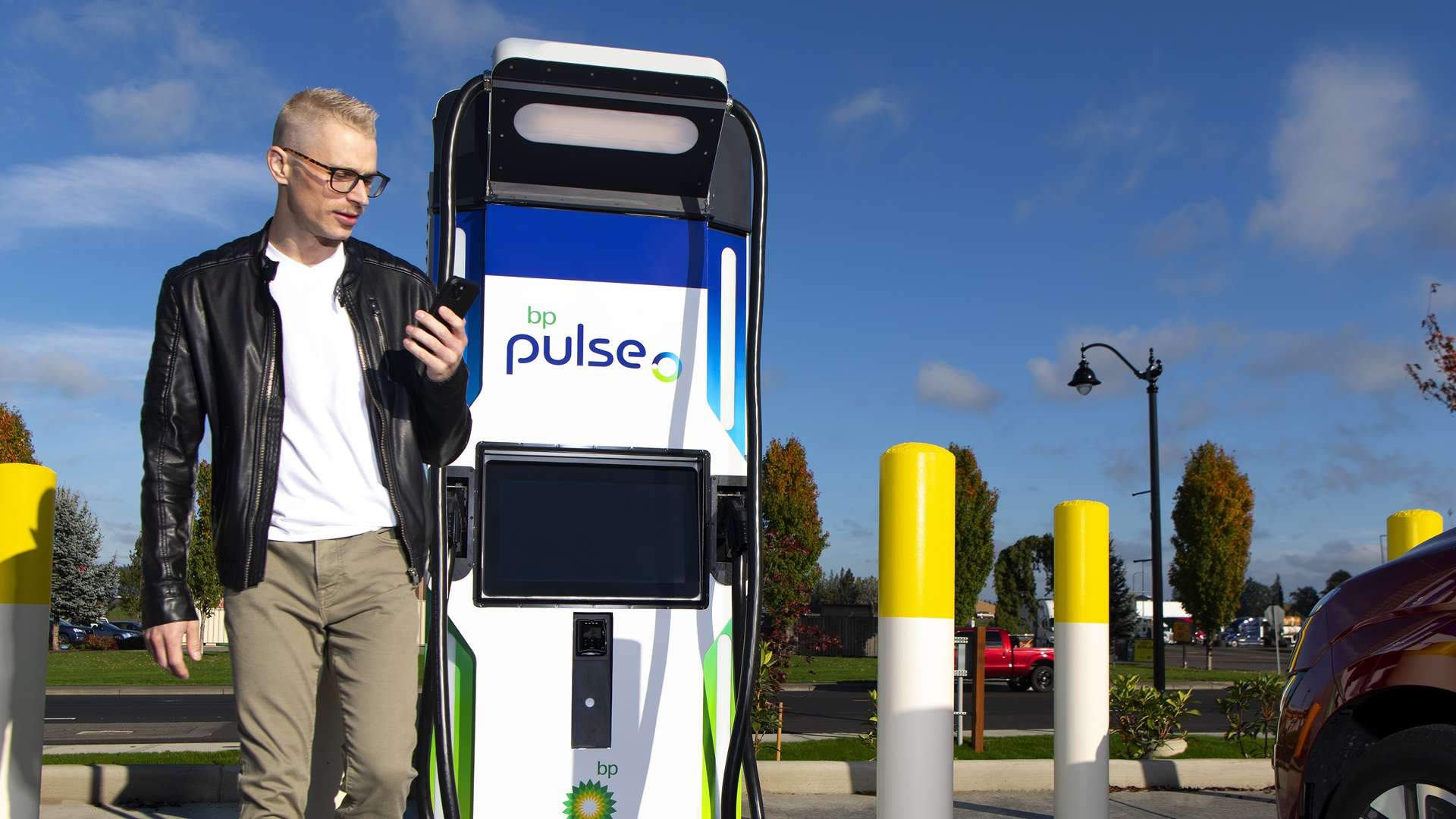

As US demand grows for electric vehicles (EV), so does the need for safe and fast public charging stations—and government support to accelerate construction of charging infrastructure.
The US is lagging other major countries in developing a fast-charging network to enable EV travel across longer distances and charging for consumers without access at home or work. As of January 2023, S&P Global Mobility estimates there were only about 160,000 EV chargers on US roadways. According to the International Energy Agency, China has more than 25 times that number, and Europe has three times as many. To keep up with demand, analysts at S&P Global Mobility report the US will need an additional 1.3 million chargers, including more than 100,000 fast chargers, by 2027.
To help the US take on the challenge, bp announced last year plans to invest $1 billion in US EV charging infrastructure by 2030 through its EV charging business—bp pulse. The goal is to build high-speed chargers at high-demand locations across the US, including airports, major metropolitan areas, and bp-branded sites, like our newly acquired TravelCenters of America, which operates 300 locations across 44 states.
The US government is also actively investing in EV charging infrastructure through incentives and tax credits. But despite both public and private investment, numerous regulatory obstacles must be addressed to accelerate the expansion of EV charging stations throughout the US. Although policies differ among states, even down to utility service territories, there are shared challenges impeding the development of EV charging infrastructure.
Here are five essential policies the US needs to accelerate electric vehicle charging across the country.
1. Ensure utilities and power grids are prepared for an increase in EV charging
Of course, power availability is necessary for the rollout of EV chargers. That’s why arguably the most important interface of market and regulated activity is the need to support cost-effective and timely grid connections with regulatory standards that will accelerate EV charging deployment.
The first step of enabling regulatory support in this space is working with utility companies to create comprehensive and accurate energy load and capital requirements forecasts to meet increased EV charging demand. Regulators and utilities can collaborate by sharing forecast data and proactively building infrastructure ahead of demand to effectively meet or surpass future charging requirements.
Second, the process of energizing—or flipping the switch on to provide power to EV charging stations—needs to be standardized and transparent. To meet consumer demands and charge effectively, EV charging providers need to have confidence that their charging stations will be powered on schedule and on budget.
2. Streamline permitting and zoning
Efficient permitting and zoning processes are an essential step in the build out of EV charging stations. To expedite and streamline the process, states can delegate that entities responsible for enforcing these regulations adhere to industry permitting best practices, establish explicit criteria for expedited review requests and set clear timelines for the review and approval process.
Revisiting zoning laws and regulations—where possible and appropriate—can also enable and accelerate the approval for an EV charging project. In general, EV projects should align with existing zoning regulations and shouldn’t require special review or approval. When that’s not possible or appropriate, zoning laws can be updated to permit charging stations with proportionate community engagement, which is especially important in locations where EV charging is needed the most.
To ensure sufficient capacity for the increase in EV charging grid demand, states should legislate to streamline and accelerate permitting for distribution power lines. To manage the increase in EV interconnection and power distribution, bp supports federal and/or state funding for training and short-term resources for local permitting authorities.
3. Standardization for all EV charging connectors
With the consumer top of mind, it’s important that EV charging connectors are standardized across the industry. There are currently three types of widely adopted connectors: Combined Charging System (CCS), the North American Charging Standard (NACS – J3400), and CHAdeMO. While CCS was the first type of dock developed by European automakers, NACS has been increasingly adopted within the US, with most major automakers announcing they would use it starting in 2025. In the meantime, Tesla created the Magic Dock—which works with both—so its Superchargers could be used with CCS and NACS EV receptors. This was an important factor into bp’s $100 million purchase agreement of Tesla’s ultra-fast chargers. Accordingly, we’ll continue to encourage the process of standardizing all widely utilized connectors with safety and customer convenience top of mind.
Explore these interesting reads:
4. Protect consumers and employees at EV charging stations
Establishing uniform minimum safety standards for EV charging at gasoline stations is critical to protecting consumers and employees. As a company whose brands span more than 8,000 retail gas stations, truck stops and travel centers across the US, we adhere to the highest safety standards. With over 29,000 charge points globally—some of which are at retail gas stations—bp has extensive experience safely operating locations that offer both gasoline and EV charging. Our internal safety protocols, which center on consumer safety, are as stringent as global industry standards—and in some cases, even more rigorous. It’s critical that US regulators develop uniform safety standards to protect consumers and employees.
5. Incentivize EV charger roll-out with transport energy regulations
bp supports the reward of EV charging under Low Carbon Fuel Standards (LCFS)—as it is in California—and the optionality for technologies to compete with other lower carbon transport energy vectors such as biofuels and green hydrogen. Capacity crediting under an LCFS which supports the deployment of zero emission vehicle infrastructure provides targeted regulatory support to EV charging infrastructure investment.







